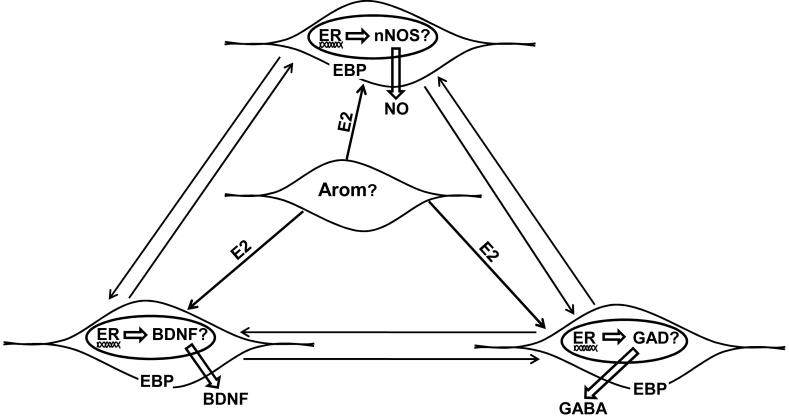Figure 1.
This schematic diagram depicts several signaling systems that may contribute to sexual differentiation of the vertebrate diencephalon. Estradiol (E2) synthesized via the aromatase (Arom) enzyme may bind estrogen receptors (ER’s) located in cell nuclei or estrogen binding proteins (EBP; that may or may not be identified ER’s) found in cell membranes. E2 signaling through ER’s may influence the transcription of genes involved in nitric oxide (nitric oxide synthase; nNOS) or GABA synthesis (glutamic acid decarboxylase; GAD). In turn, the end products, NO and GABA, may diffuse locally to influence neighboring cells or form molecular gradients to impact cells at greater distances. E2 signaling through ER’s may also influence brain derived neurotrophic factor (BDNF). The arrows between cells indicates the hypothesis that cells which synthesize nNOS, BDNF, and GAD may also interact with each other to influence the migration and cell positions of neurons in the developing preoptic area (except BDNF) and hypothalamus (see text for specific evidence). Aromatase may be localized in a separate cell type as depicted in the diagram, or be co-localized in one of the other cell types.

